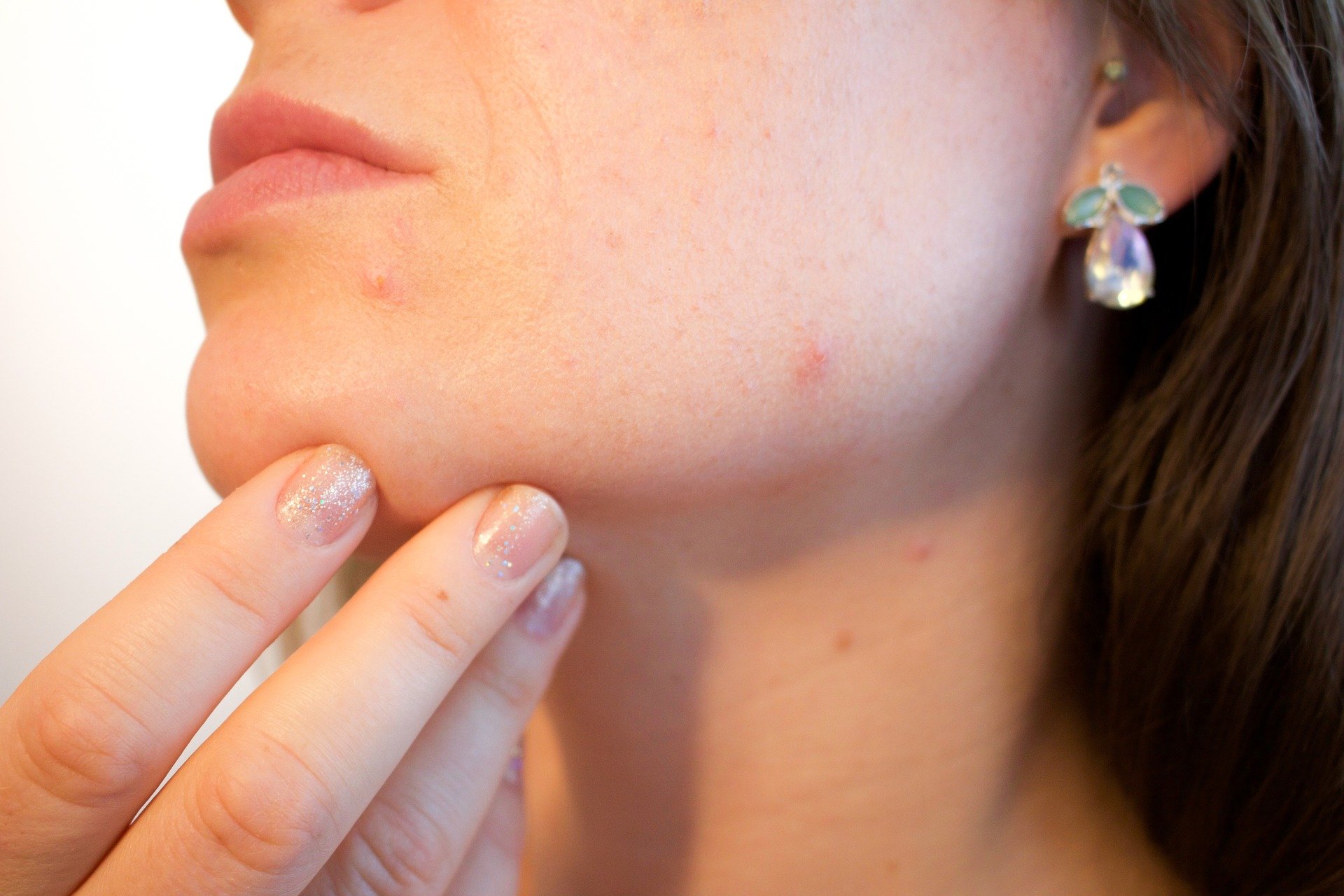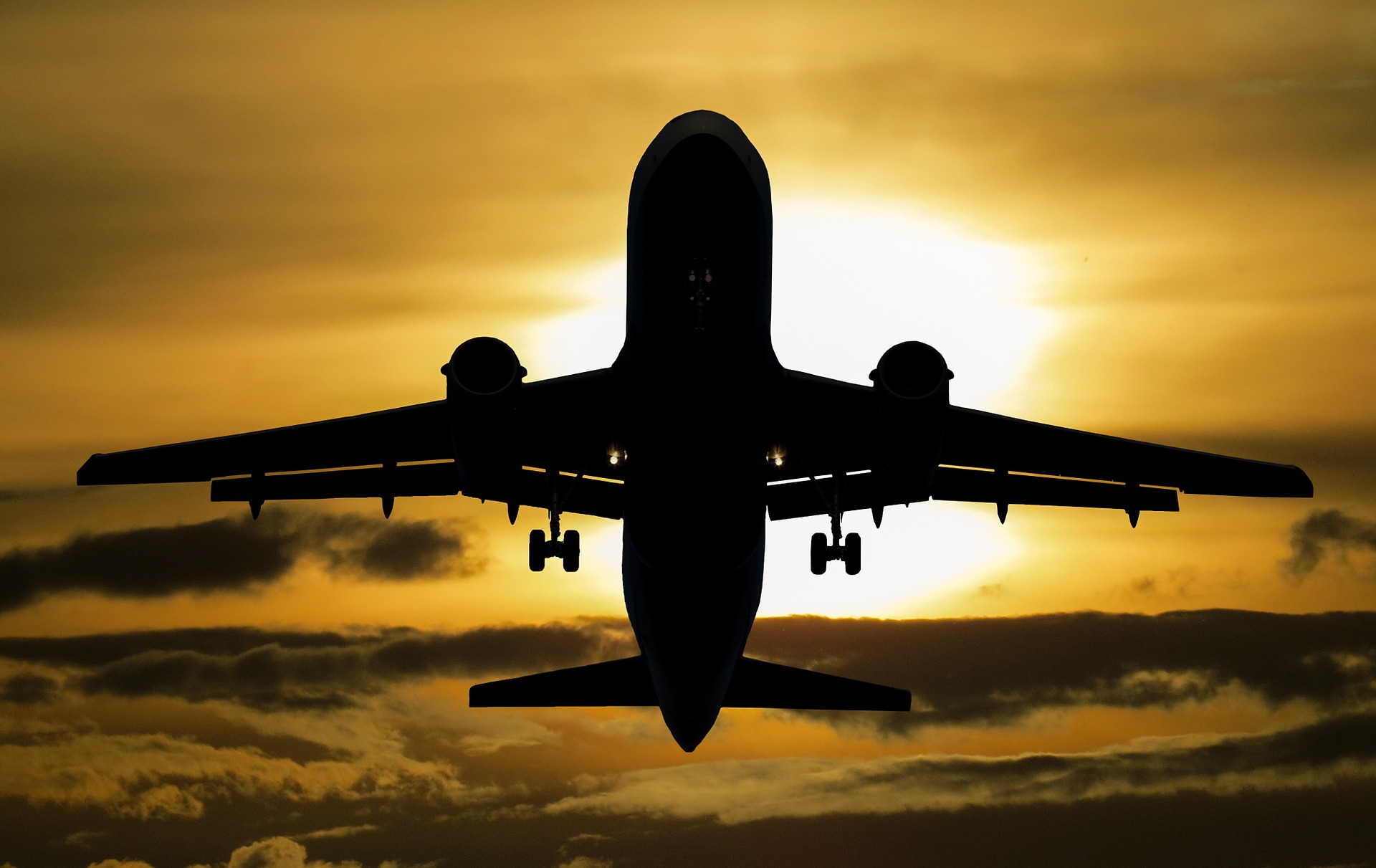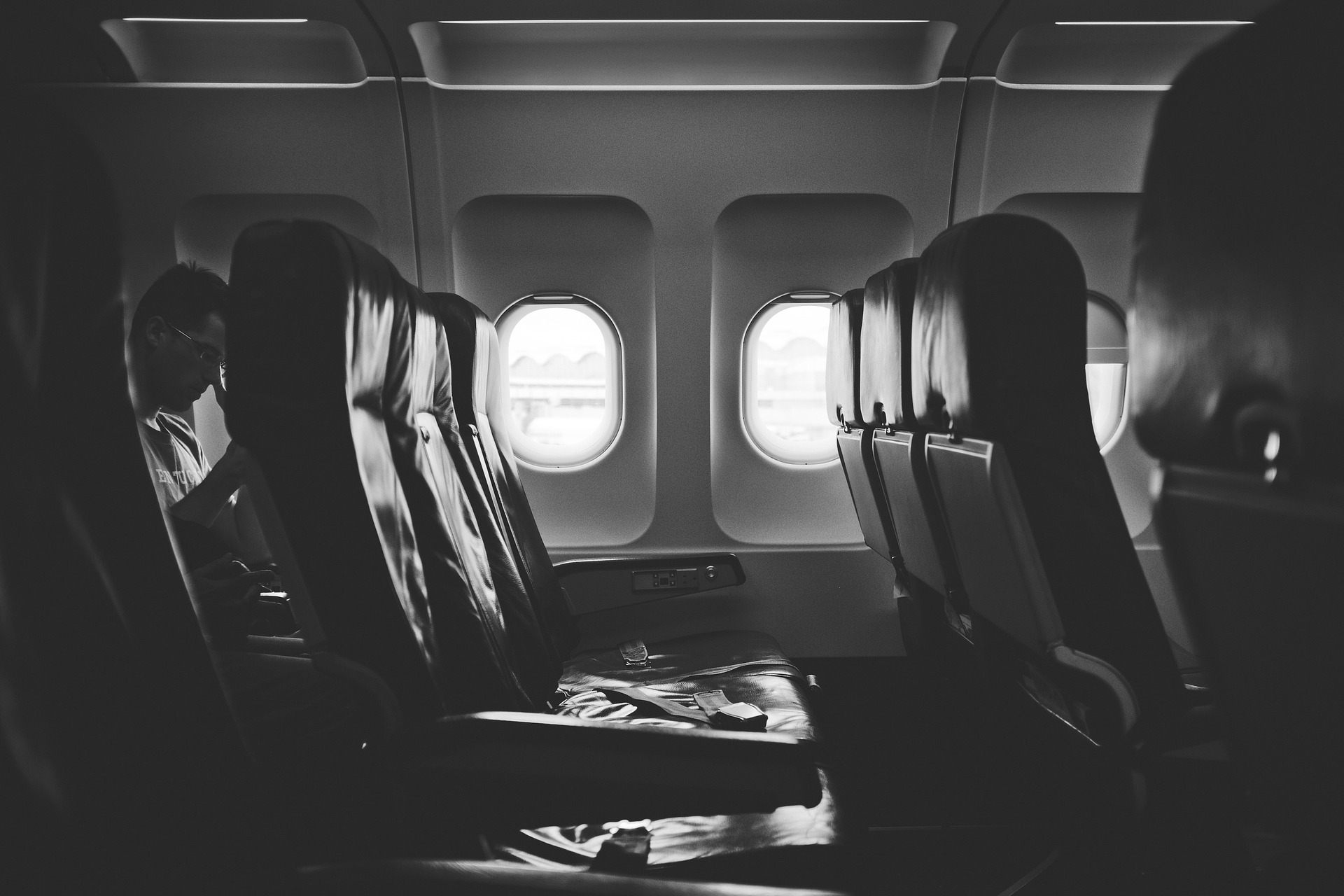
Coronavirus is getting all the glory these days, but it is not the only health risk of flying. I’ve compiled some of the most prevalent side effects of flying, from the annoying beauty woes up to the downright dangerous. Don’t worry—I won’t advise you not to fly, and I certainly won’t be hanging up my wings anytime soon. But since I talk so much about the joys of flying and the benefits of my job, I thought I’d take a dip in the negative Nancy pool and let you know about the less glamorous side of life in airplanes. Specifically, how it can affect our bodies.
We do not often think about it but careening through the air at 30,000 feet at 600 miles per hour is not at all “normal” as far as human bodies are concerned. Some of these adverse effects of flying will be common sense things you’ve heard of and others might be a total surprise. Read on for more.
The side effects of flying:
1. Blood Clots
Let’s just start with the serious, shall we?
Sitting still for long periods of time can increase your risk of blood clots, or “deep vein thrombosis,” if we want to get scientific. The longer your flight, the more of a risk this can be. I’m talking to you coast-to-coast fliers here! This risk can increase further with factors like age, obesity, and use of hormonal birth control—AKA the pill, the ring, or an IUD.
The thing that makes blood clots so scary is not their formation, but their breaking apart. Once a piece of the clot breaks free it can make its way to the lung—called a pulmonary embolism—which can be very dangerous or even fatal. This happened to one of my best friends on a work trip and she tells me it was painful and frightening. Luckily, she is okay, and we get to be besties.
Mitigating this risk is simple:
Take a walk. Wait until the seatbelt sign is off, and don’t be up the entire flight, but see that you stand up and move about at least once or twice on a long haul. I work mostly transcon flights to and from California. These long flights, more than 4 hours, are really where the risk lies. For those of you taking a little 2-hour flights you needn’t worry so much about moving around. Also, note that this does not give you a pass to do yoga in the galley. Save it for your studio.
The occasional traveler should be fine, but women of child-bearing age who travel often may want to consider using a non-hormonal birth control method like the copper IUD. Your body, not mine, just take care of yourself.
2. Varicose and Spider Veins
In the same vein as the last point—see what I did there?—frequent flying can affect your veins. Specifically, the ones in your legs. I’m told that flight attendants are at greater risk of forming spider and varicose veins because of the amount of time spent standing on the job. This also applies to professions like hair stylists and servers, who spend most of the workday standing on their feet. Anecdotally, I can tell you that my own spider veins (which I’m predisposed to from family history—thanks Mom and Dad) have become significantly more noticeable since I started flying 7 years ago. So much so that I’m looking at treatment options.
Prevention
Spider veins are relatively harmless, but they are quite an eye sore. Varicose veins, on the other hand, can be painful and come with higher risk of developing deep vein thrombosis. Maintaining a healthy weight is part of the mitigation strategy for combatting spider and varicose veins, but from my own experience, as a “pretty fit” person, I can tell you that weight is NOT the only factor in these vein woes. Compression socks or stockings are one way to prevent or slow down he formation of spider veins and varicose veins while flying. Compression tights give the added benefit of feeling like a stuffed sausage while at work, so win-win?

There are few things worse than the bloat that comes with a long-haul flight.
3. Gas & Bloating
Bloating
Moving right along to other pleasant side effects of flying.
Want to feel like a hot air balloon bursting at the seams? Work a 12-hour day of flying!
The changes in air pressure can cause the gases in your body to expand, puffing you up like big bertha after a hot dog eating competition. The longer the flight, the worse your bloating symptoms will be. For flight attendants working long days, expansion is a way of life. It is not uncommon to have to loosen our jumpseat harness for final descent because we not longer fit in our take-off sized seatbelts. All this expansion and contracting can feel exhausting and uncomfortable. Not to mention a mood killer if you have a hot date after work. But, it is not a permanent issue and there is no need to be alarmed if you’re feeling fluffy post-flight.
Beat the bloat.
Drinking lots of water and getting a good night’s sleep is the best medicine after flying. And you should be back to normal size the next day. But to mitigate the discomfort, you may want to skip the fast-food in the airport and sodium-packed plane fare and opt for something lean and healthy to eat. Think salad, fruit, trail mix or unsalted nuts. I honestly don’t know what meat-eaters eat in-flight, so you’ll have to get recommendations for that elsewhere. Carbonated beverages will exacerbate your feeling full, and that tomato juice you’re craving in-flight is great for dehydration and water retention. Sorry to be a buzzkill but water is the best option.
Gas
I made this its own topic, despite being directly related to bloating, because of its separate unpleasant side-effect. You’ve all heard the stories of cropdusting on the airplane, and those stories are true. The changes in air pressure cause the gases in your body to expand, resulting not only in feeling like a full-sized Macy’s Day Parade float, but also in flatulence. Wow, I never thought I’d publish the word “flatulence” on this blog.
The ways to mitigate this embarrassing effect is to watch what you’re eating and drinking. You know your body better than I do, so stay away from problem foods the night before and the day of your flight. C’mon, do it for the neighbors! They don’t deserve this. All of the above recommendations (avoid sodium, carbonation, greasy fatty foods) help to mitigate bloating and therefore will help with this issue as well.
4. Dehydration
Airplane air is soooooooo dry. Most indoor settings have a relative humidity level of somewhere between 30-60%. The cabin of an airplane has humidity levels of 10-20%. That is desert status! So, when you feel dry eyes and a scratchy throat, you are not imagining things. To make matters worse, many of you are not drinking enough water before or during your flights. This is one of the major reasons that so many people faint or pass out during red eye flights from West to East.
Alcohol and caffeine are major aggravating factors in dehydration. Skip both and drink your water. I don’t want to fill out paperwork when you hit your head from fainting.
5. Skin Troubles
Dry Skin
Obviously, where dehydration is a problem, so too is excessively dry skin. Many flight attendants suffer from chronic dry skin as a result of our harsh workplace. Not just our faces, either. The soap in the lavatories is harsh and drying and helps our already moisture-starved hands flake and crack. Going back and forth between hot and cold climates can also sap your skin’s moisture.
Remedies
Hand lotion and moisturizing lip balm are essential items for every flight attendant, and they should be for you too while traveling. Many flight attendants also carry with them some kind of facial mist to replenish their skin throughout the workday. Drink your water and keep up with a solid moisture regimen. This is critical if you are traveling often.

Can we all agree that mask-ne is the worst side effect of 2020?
Acne
Beautiful. Being a teenager and in your thirties all at once. This delightful side-effect has increased tremendously—even for people with normally well-behaved skin—since the implementation of mask-wearing. But air travel has long been a problem for those with breakout-prone skin.
The oxygen on the airplane is recycled over and over throughout the day. In pre-Corona times the cabins were cleaned less frequently than you probably think. Seldom, in fact. So basically, every surface you touched was disgusting. This may be *less* true now with enhanced cleaning procedures, but it is always kind of gross in an airplane. Touching your face during the flight can transfer that nastiness on to your sweet face, leading to breakouts.
Stress is another major factor in breakouts, and for a good many people air travel is stressful. The long security lines, TSA barking orders at you, delays, finding food for your toddler. It can be a whirlwind of overstimulation, which means a danger zone for acne-prone folx. Because the air in the cabin is so dry, as we discussed in the last section, it may cause your skin to compensate by producing more oils. And we all remember puberty, right?
So, what to do to prevent breakouts while flying?
Drink lots of water to keep hydrated.
Moisturize.
Wear light, clean makeup (or skip it altogether) rather than spackling on full-coverage foundation.
Wash your hands frequently and be mindful of touching your face.
Unless you are opting for one-time use surgical masks, you should be washing your face mask daily. Don’t bring yesterday’s oil and grime into today’s fresh-faced flight.
Bags, Eye Bags
Anyone else stay up all night before an early flight? Just me? Cool. Working as a flight attendant, it is inevitable. Some days you will look like an exhausted racoon. Flights get delayed. Sometimes when you plan to finish work at 10pm, you end up finishing at 5am. Sometimes a fire alarm goes off in the middle of the night in your hotel when you’re trying to sleep. Sometimes you work redeye flights and aren’t able to rest sufficiently beforehand. No matter which airline and no matter how good a flight attendant is at time management, there will be times when the exhaustion shows. For some people this manifests as dark circles, for others puffy bags, and for some (like me) wrinkles that make you want to cry.
The most obvious solution is to get some sleep and drink water before you fly. Regular use of eye serums will help. There are so many fun products these days. Bring an under-eye mask to use in-flight or try one of these warming steam-masks. A friend got me a pack and I LOVE using them on a layover after a long day of flying. I’m not sure of their efficacy, whether they’ll cure your eye bags, but the relaxation alone is worth it! If you can’t prevent the baggage, a solid concealer will help to hide it. I don’t do makeup recommendations, but if anyone reading this has a killer under-eye concealer recommendation, post it in the comments! Help us!
6. One-Inch Nails
Paint your nails and then go work on an airplane. No, seriously, give it a try. They’ll be chipped the first time you open a bin, broken the first time you pull a drawer from a beverage cart. It is some kind of unwritten rule that airplanes will ruin your nails. Many of my coworkers counter this by getting gel nails, sand nails, acrylic nails, I don’t even know all the types of nails.
When I took six weeks off of work to live and study in Colombia, my nails grew long and strong. When I took extended time off in Mexico, the same thing happened. And when I was out of work for four months in the beginning of the pandemic, my nails had never been healthier or more beautiful. The problem is the day I go back to work my nails break and chip, become brittle and dry. It’s a vicious cycle.
How to nail it.
Biotin and Collagen are the dietary supplements that will help your nail woes. Drinking lots of water (See how water fixes everything?) and keeping a protective coating on them will help, too. Whether it is gel or sand or whatever the kids are doing nowadays. Even a coating of clear polish is better than no protection.
7. Injuries
Moving along from the list of beauty woes triggered by gross airplanes, we’ve got other troubles. Injuries can happen in the airport and on the aircraft, and some of the common ones are:
1. Injuries from lifting bags.
2. Rolling ankle AKA high heels can kill.
3. Bag falling on you.
4. Injuries from turbulence.
These are all highly prevalent and very preventable.
1. Bags.
Do not pack more in your bag than you are able to lift. Simple. Got a lot of stuff? Check it at the ticket counter. Flight attendants sustaining injuries because you couldn’t decide what shoes to bring is just unacceptable. Do you know how much short-term disability pays when we are out of work? Not enough. Please be a considerate human and don’t expect someone else to lift your bag.
2. Heels can kill.
Wear shoes you can walk in. No, I didn’t say shoes you can stand in. I said shoes you can walk in. Ones that don’t require you looking down at your feet to prevent falling. Further, if you are ever on a flight in which an emergency evacuation takes place, please take your high heels off before getting on the slide.
3. Falling Bags.
People. PEOPLE. When you put your bag in the bin, put it all the way in the bin. Hang up your inappropriate facetime convo and use TWO hands to place it into the bin. Make sure your giant backpack with shoes and canteens hanging off of it isn’t smashing people in the head as you walk by during boarding. Of all the many, many times I have seen people injured by falling bags, it is almost always because someone else was being careless. Don’t be that person pleeeease.
4.Turbulence.
Wear your seatbelt. You’ve seen the Key & Peele scene. I won’t go any further.

If you have to look down while you walk, these are NOT airport-approved shoes.
8. Feet
Wearing tights and heels is really bad for your feet. So is click-clicking across the tile and concrete floors in airports all day and night. Wearing heels can cause corns, bunions, bone spurs and a whole host of other podiatric problems. But they look good with a uniform amirite? Most female and female-presenting flight attendants don’t have the option to skip heels altogether. But we are able to change into flat shoes for our in-flight service.
Save the toes!
Finding a shoe that fits properly is the number one thing we can do to save our feet. Too loose and you’re looking at corns, callouses and blisters from friction or injuries from tripping. Too tight can bring about bunions and even lead to hammer toe. Yikes. Make sure you have space for your toes in those shoes (looking at you, pointy-toe pump lovers). And FAs: Don’t try to be cool for the pilots—take your shoes off when you get in the air.
The second thing you can do is get regular pedicures for preventative maintenance. Best o’luck.
9. Ears
The changes in pressurization throughout a flight are necessary for safe air travel but are NOT normal for the human body. During takeoff and landing, pressure changes rapidly. Because it happens so fast, the pressure within the middle ear and outside of the ear fall out of equilibrium. This can cause a stretching of the Eustachian tube and pain for the flier. Most of the time this pain or discomfort subsides when the pressure evens out, on landing or when cruising altitude is reached. But sometimes it sticks around. This can lead to other more serious problems if you are traveling with a cold or sinus infection—all the way up to a ruptured ear drum.
Mitigating in-flight ear pain
Chewing, yawning, or swallowing during takeoff and descent can help by moving the air around in your middle ear and releasing pressure. Lollipops, water and chewing gum can help you out here. Just don’t stick your gum in the seatback pocket afterward.
A heating pad or hot compress held to the problem ear can have the same effect of releasing pressure.
If ear pain is a problem for you when you fly or if you suffer from frequent sinus infections, try these Earplanes ear plugs which claim to have a pressure filtration system to prevent pain.
If you are traveling with a cold or sinus infection (which you shouldn’t be) NEVER “pop” your own ears by holding your nose and forcing pressure. This is dangerous and can lead to a ruptured eardrum and/or hearing loss.
10. Poisoning by toxic fume event.
If you’ve flown recently, you’ve probably heard a lot about HEPA air filters and how they magically clean the recycled oxygen in the cabin. Supposedly this can filter out germs and virus particles, but what about other offending substances?
Flight attendants and pilots have long known about a phenomenon called “toxic fume events” that takes place from time to time in airplanes. These events occur when engine oil and other toxic fluids leak into the cabin air system due to faulty seals and other mechanical issues. When the toxic substances get circulated in the plane, it can cause crew and customers to become sick. This issue has been widely reported over the last five years, and we are coming to see just how commonplace this problem is. The official stance remains that there is no evidence of long-term health risk from toxic fume events. But this damning LA Times piece on the subject, along with airline pilot and flight attendant unions, beg to differ.
This does not happen on every flight, and unfortunately there is nothing you can do to prepare or mitigate other than just knowing the risk and the signs to look for.
Travelers—if you smell a strong “dirty sock” or “gym bag” odor, the aircraft might just be undergoing a fume event. FIRST look around for actual smelly feet in your vicinity. If the culprit is not found, head to the galley to ask a flight attendant about the odor. Sometimes this can happen in one area of the cabin before it permeates, so timely information is helpful. It could also be a totally normal smell—de-icing fluid left over after takeoff, for example—in which case talking to the flight attendant can put you at ease.
For us flight attendants, the most important thing we can do is ensure we are filling out our reports, including as much detail as possible, and submitting in a timely fashion. Sometimes we become lax about paperwork, but in this case all of our safety depends on it.

Even the best things come with side effects, and air travel is no exception.
Whew! That was a lot. These are some of the worst side-effects of flying. (That are not Coronavirus.)
Don’t let me scare you out of traveling. Most of these things are more annoying than actually dangerous. And if you are an occasional vacation flier, you probably needn’t concern yourself with any of it. But for those of you traveling regularly, you may want to adopt some of these mitigation strategies. Ensure you are taking steps to keep yourself in good health—on the road and in the air.
Flight attendants and frequent fliers—is there something I missed? What side-effects of flying have you found particularly annoying? And have you come up with a solution?
Thanks for stopping by the Negative Nancy train, come back next week and I’ll try my best to uplift you.
Wishing you all safe travels, flawless beauty, and all the rest you need.
Happy weekend y’all!

Photo credit in order:
Feature Image by Ysn Benz via Pixabay
Female traveler by Free Photos via Pixabay
Acne photo by Kjerstin_Michaela via Pixabay
Heels by StockSnap via Pixabay
Plane by Gerhard G. via Pixabay


